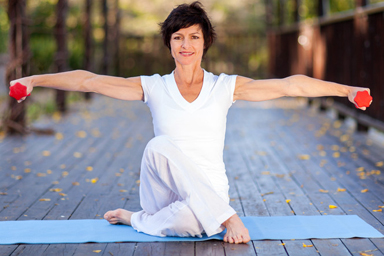 Exercise is an integral component of a healthy lifestyle. However, many people are unaware about the role that exercise can play in promoting healthy aging, have misconceptions about its benefits, and give up exercise at some point in their life.
Exercise is an integral component of a healthy lifestyle. However, many people are unaware about the role that exercise can play in promoting healthy aging, have misconceptions about its benefits, and give up exercise at some point in their life.
Recognizing the vital role exercise plays in promoting healthy aging is paramount. Dispelling misconceptions and fostering a lifelong commitment to physical activity can significantly contribute to overall well-being and longevity. Embrace the power of exercise for a healthier and more fulfilling life journey.
Debunking Exercise Fallacies
Let’s take a look at these fallacies and the facts.
- Older adults do not need to exercise: Many people think they are too old, sick, tired, and out-of-shape to exercise. The truth is that exercise can keep you healthy, reduce the symptoms of many chronic conditions, slow down and even prevent bone loss, build strength, and improve balance, coordination, and memory. Inactivity is the reason why many older adults lose the ability to do things on their own. People who are sedentary are more prone to hospitalizations, doctor visits, and illness.
- Exercise only benefits the body: Of course, exercise benefits the body. It improves the function of heart, muscles and bones and helps counter a range of illness. But more than just body, exercise strengthens connections in the brain and minimizes the damaging effects of stress and depression.
- Exercising is not safe for the elderly: Some people think that they shouldn’t exercise as it would increase their risk of falling. The reality is that physical activity helps build strength and stamina, and prevents loss of bone mass, thus improving balance. So it actually reduces your risks of falling.
- It is too late to start exercising: Age is not a barrier to start exercising and many people who start off late in life actually experience more improvements than those who began at a younger age. So start off with mild activity and build up to the level that your body can tolerate.
- Exercise will hurt my joints: Many studies have shown that exercise actually helps relieve arthritis pain. Even walking can ease back pain. According to a WebMD report, a study of people over age 60 with knee arthritis noted that those who exercised more had less pain and better joint function.
So, no matter how old you are, make time for exercise. A study conducted by Oregon State University researchers suggests even as small as one- and two-minute increments that add up to 30 minutes per day would provide the same benefits as longer bouts of physical exercise in the gym.